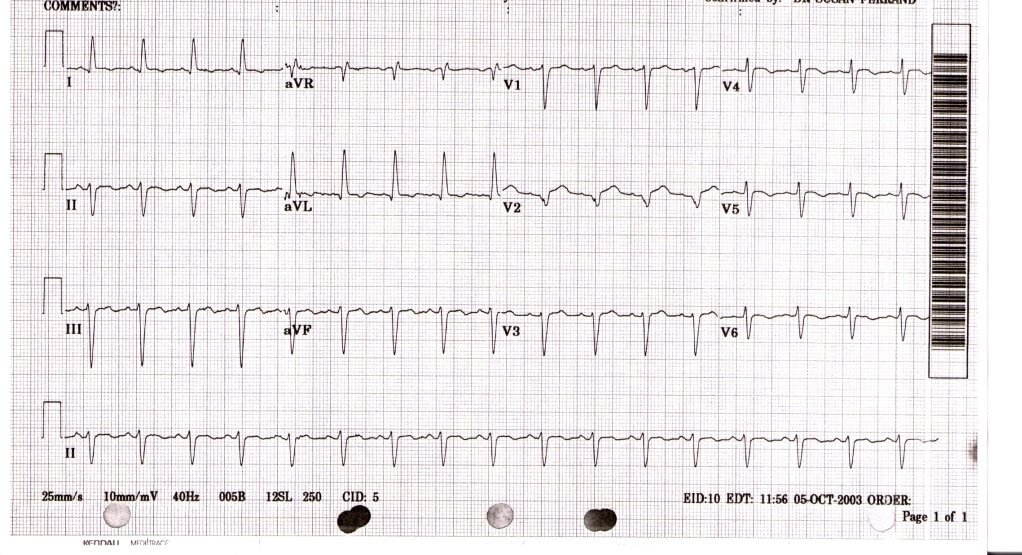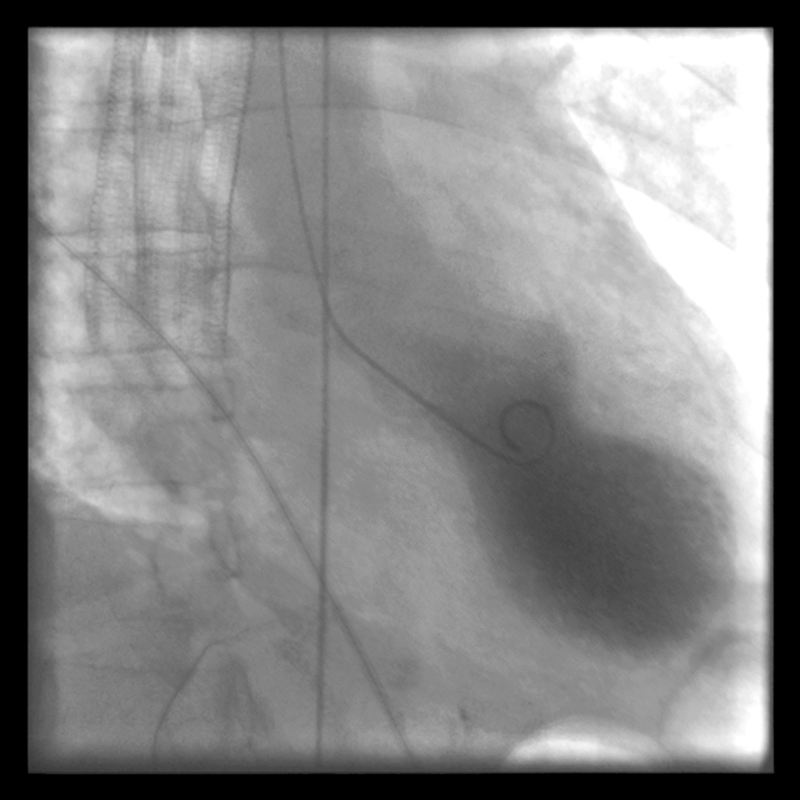A 53-year-old woman presents with severe central crushing chest pain that radiates to her left arm. She has been under a significant amount of stress recently following the unexpected death of her husband. Her ECG is shown below:
She is taken to the cath lab for a primary angioplasty. Her angiogram reveals normal coronary arteries but her left ventricle has an unusual appearance and is described as looking like an ‘Octopus Pot’.
1. What is the most likely diagnosis?
Show Answer
This patient has a diagnosis of Takotsubo cardiomyopathy, which is also known as acute stress cardiomyopathy. Takotsubo cardiomyopathy can present in a very similar manner to an acute myocardial infarction. The cause is unknown but it tends to occur in patients that have recently experienced significant emotional or physical stress.
ECG sourced from Wikipedia
Courtesy of Akinwande. O. et al. CC BY-SA 2.0
2. How is this diagnosis confirmed?
Show Answer
The word Takotsubo means ‘octopus pot’ in Japanese, as the left ventricle changes into a similar shape, developing a narrow neck and a round bottom.
The diagnosis of Takotsubo cardiomyopathy can be challenging initially. ECGs often show the same characteristic changes of ST elevation that are seen in an acute myocardial infarction. Troponin levels may also be elevated, causing further confusion. Subsequent angiogram will show normal coronary arteries and the diagnosis is made when the angiogram shows the characteristic ‘Octopus Pot’ shaped left ventricle:
Image sourced from Wikipedia
Courtesy of Gangadhar. T.C. et al. CC BY-SA 2.0
3. How should this patient be treated?
Show Answer
Because Takotsubo cardiomyopathy very closely mimics acute coronary syndrome (ACS) it is safest to treat patients according to established ACS protocols in the first instance.
Once a diagnosis of Takotsubo cardiomyopathy is made patients should be admitted to hospital and managed by a cardiology team. Negatively inotropic drugs, such as beta-blockers and calcium-channel blockers appear to be helpful in improving symptoms. Positively inotropic should be avoided as they have been reported as exacerbating symptoms. Other than this treatment is largely supportive.
Patients should be counseled about lifestyle and encouraged to stay healthy. They should also be educated about stress management and avoidance techniques in order to avoid a recurrence.
4. What is this patient’s prognosis?
Show Answer
The vast majority of patient’s with Takotsubo cardiomyopathy survive the initial event and go on to do well. There are very low mortality and morbidity rates associated with the diagnosis.
Cardiology follow-up is recommended in the weeks after discharge, with serial echocardiography to ensure resolution has occurred. The long-term effects are not fully understood and for this reason annual cardiology follow-up is then recommended thereafter.








Very interesting case indeed?
Excellent‘Peculiar Unusual case’,interesting somehow.